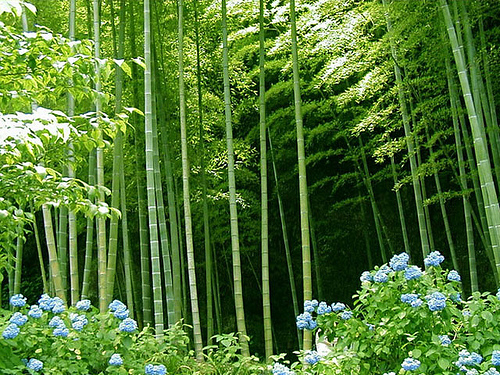
Bamboo: Ecofriendly or Not So Much?
I’ve heard bamboo flooring is more eco-friendly than traditional pine or oak. Is this true?
—Cara Truhlar, Montpelier, VT
At first glance, bamboo is as green as it gets. It grows like a weed (technically, it’s a grass) and can reach harvestable height in three to five years. This crop—also native to the Americas—sequesters carbon more efficiently than slow-growing oak forests, which can take 10 times as long to reach maturity.
Bamboo is grown most extensively in China for commercial products, but—here’s the hitch—it can become invasive if not properly managed. Widely acclaimed for its prolific growth, bamboo doesn’t usually require fertilizers and pesticides for optimal yields. However, once it’s cut, most bamboo is treated with chemical preservatives, as is the case with some other mainstream flooring materials, says Brad Salmon, president of the American Bamboo Society. These issues should factor into a product’s measure of sustainability.
The Forest Stewardship Council, the main green-wood accreditor, has just started evaluating U.S. bamboo producers, and so far it has okayed only one company, Smith & Fong Co. If you’re shopping for bamboo flooring, it’s best to start with taking a hard look at its source. Bamboo grows in some of the most threatened ecosystems in Southeast Asia and Central America.
Look for planks made from farmed, not wild, bamboo. Also “keep its whole life cycle in mind,” says Stowe Hartridge-Beam, program manager for indoor-air quality at Scientific Certification Systems, an industry-recognized third-party certifier. “How is the product manufactured and transported? Is it recyclable when it reaches the end of its life?” He says these questions must be asked of a bamboo floor salesperson or the manufacturer; they should be able to provide answers. Remember, bamboo, like any wood, needs additional sealants if you want to use it in a place that gets wet, like a bathroom or kitchen.
Ask for varnishes and glues that have low volatile organic compounds, or VOCs, and that also adhere to California Section 01350, the highest air-quality standard for these products. Always buy the most sustainable products you can afford. You’re worth it.
For more details on the bamboo debate, specifically bamboo that’s used for clothing, check out the excellent coverage on The Greenloop’s blog.
This question and answer originally published in the Green Guru column of Audubon Magazine written by Starre Vartan.





